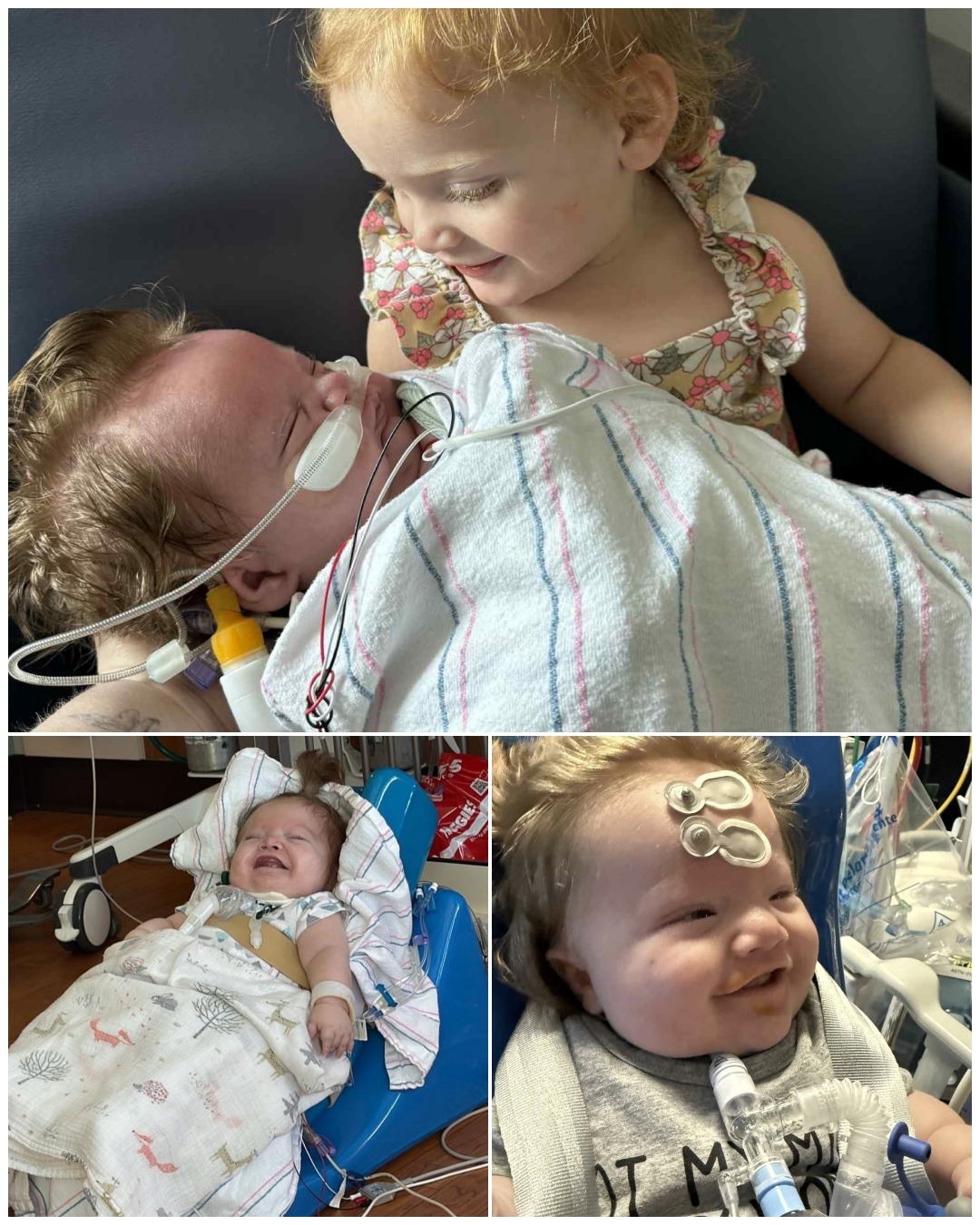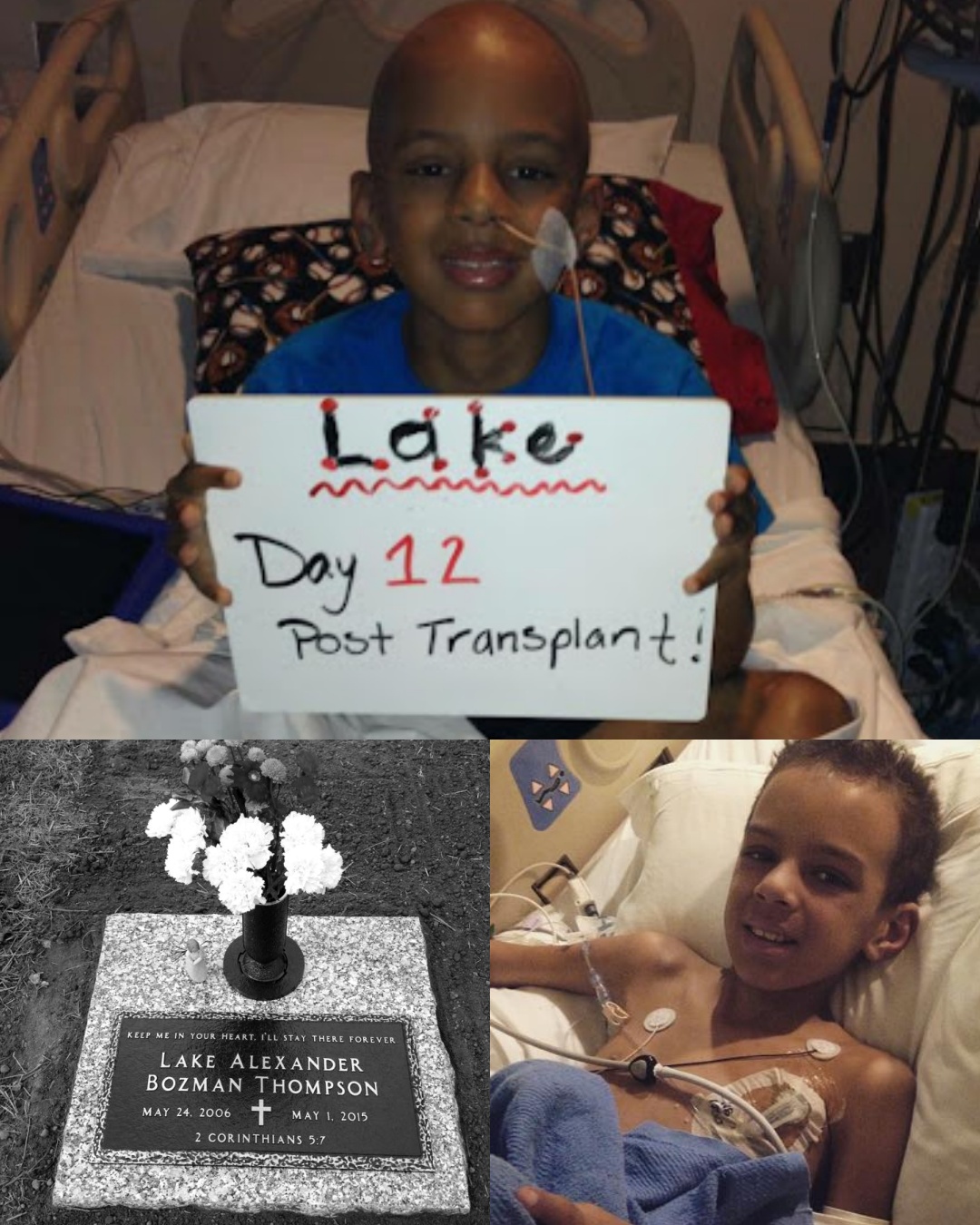Sterling Brown, a nine-month-old infant from Montgomery, Alabama, has faced a lifetime of medical challenges despite his young age. Born prematurely at 34 weeks gestation, Sterling required immediate intervention to stabilize his breathing and overall health. Upon delivery, he was intubated due to respiratory distress, a common necessity for premature infants whose lungs have not fully matured.
Early in his hospitalization, Sterling was diagnosed with esophageal atresia, a congenital malformation in which the esophagus fails to connect to the stomach. This condition prevents normal feeding and necessitates early surgical intervention. In addition, Sterling was found to have a
ventricular septal defect (VSD), a hole in the wall separating the heart’s lower chambers, which can lead to inefficient blood flow, oxygenation issues, and potential heart failure if not addressed.

Initial care for Sterling was provided at Children’s of Alabama, where a multidisciplinary team including neonatologists, pediatric cardiologists, and pediatric surgeons coordinated his treatment. Surgical repair of the esophagus was prioritized, often involving procedures such as primary anastomosis or staged repair depending on the length of the gap and associated anomalies.
Sterling’s cardiac condition required close monitoring. VSDs in infants can vary in severity, and small defects may close spontaneously, whereas larger defects often require surgical correction. Pediatric cardiologists used echocardiography to assess the size of the defect, heart chamber pressures, and overall cardiac function, ensuring hemodynamic stability throughout his other medical interventions.

Complicating Sterling’s respiratory status was tracheomalacia, a condition characterized by the collapse of the trachea during breathing. This structural weakness of the airway can lead to airway obstruction, wheezing, recurrent infections, and difficulty maintaining oxygenation. Management typically involves continuous monitoring, supportive ventilation, and, in severe cases, surgical intervention such as airway reconstruction or the placement of airway stents.
Due to the severity of his airway complications, Sterling was transferred to Vanderbilt University Medical Center, a facility experienced in pediatric airway reconstruction, for evaluation and treatment of tracheomalacia. There, specialized imaging including bronchoscopy and CT scans allowed the surgical team to visualize the tracheal collapse and plan corrective strategies. These procedures aim to stabilize the airway, reduce respiratory distress, and prevent long-term complications such as repeated infections or chronic lung disease.

After stabilization at Vanderbilt, Sterling returned to Children’s of Alabama to continue treatment for bronchomalacia, a narrowing of the bronchial tubes that further compromises airflow to the lungs. Bronchomalacia often requires careful respiratory management, including mechanical ventilation, bronchodilators, and in some cases surgical or interventional procedures to reinforce airway structure.

Sterling’s care plan is extensive and ongoing. He remains hospitalized and under continuous observation, with multiple specialties involved in his treatment. Neonatology, pediatric surgery, cardiology, pulmonology, and anesthesiology teams coordinate daily to ensure that interventions are prioritized correctly and that the infant’s growth, nutrition, and respiratory status are carefully monitored.
Feeding presents another significant challenge. Infants with esophageal atresia often cannot feed orally until surgical repair is complete and the esophagus has healed sufficiently. Sterling’s nutritional needs are met via
nasogastric or gastrostomy feeding, with careful attention to caloric intake, fluid balance, and tolerance to prevent aspiration or reflux complications.

Looking ahead, Sterling may require a total airway reconstruction surgery
to address both tracheomalacia and bronchomalacia. These complex procedures involve reshaping or reinforcing the airways to prevent collapse, improve airflow, and support normal respiratory development. Postoperative care will include intensive monitoring, mechanical ventilation, and long-term follow-up to track airway function and growth.
Sterling’s parents, Justin and Jazzman Brown, play a critical role in his care. They provide emotional support, participate in bedside care, and work closely with the medical team to understand the nuances of his complex condition. Family involvement is essential in monitoring symptoms, managing feeding protocols, and ensuring adherence to the treatment plan.
Throughout his nine months of life, Sterling has required continuous monitoring of vital signs, oxygen saturation, cardiac function, and growth parameters. Recurrent assessments through echocardiograms, chest imaging, bronchoscopy, and laboratory testing guide medical decisions and ensure early detection of complications.

The coordination of care across multiple hospitals and specialties exemplifies the complexity of managing multiple congenital anomalies in a single patient. Decisions regarding timing of surgical interventions, airway stabilization, and cardiac management must be carefully balanced to optimize survival and long-term quality of life.
Sterling’s respiratory therapy includes strategies to maintain airway patency, improve lung function, and prevent infection. These include gentle positive pressure ventilation when needed, chest physiotherapy, and careful suctioning to clear secretions. Respiratory therapists monitor his oxygen levels and work with the nursing team to adjust support according to his condition.
Cardiac monitoring continues to be a priority. His VSD requires ongoing evaluation to determine whether surgical closure will be necessary or if conservative management is sufficient. Parameters such as heart rate, rhythm, oxygenation, and signs of heart failure are continuously tracked to guide treatment decisions.
Nutrition, growth, and hydration are closely supervised. Infants with esophageal atresia and associated cardiac or airway anomalies are at high risk for failure to thrive. Feeding plans are customized, and calories are adjusted frequently to support growth while minimizing stress on the heart and lungs.
Sterling’s long-term prognosis depends on the successful correction of structural anomalies and ongoing management of respiratory function. His multidisciplinary team continues to evaluate potential interventions, monitoring for developmental milestones, lung capacity, and cardiac performance.
Recurrent hospitalizations are part of Sterling’s life. Each admission allows for reassessment of his growth, respiratory status, and cardiac function. These hospital stays also provide opportunities for interventions such as airway stenting, catheter procedures, or minor surgical adjustments to maintain stability and improve quality of life.
The complexity of Sterling’s case highlights the challenges of treating multiple congenital disorders concurrently. Esophageal atresia, VSD, tracheomalacia, and bronchomalacia each require specialized expertise, careful timing of interventions, and constant monitoring to prevent complications such as infections, respiratory failure, or malnutrition.
Despite the severity of his conditions, Sterling’s care demonstrates the effectiveness of multidisciplinary pediatric management, combining expertise from neonatology, surgery, cardiology, pulmonology, and nutrition. Each team member contributes critical insight to optimize survival, minimize complications, and plan long-term management.
Ongoing monitoring includes daily vital signs, weight checks, laboratory analysis, and imaging studies. These evaluations allow early detection of potential complications, adjustments in medications, and modifications in feeding strategies. Continuous assessment is essential for infants with such fragile health.
Sterling’s airway challenges require meticulous attention. Tracheomalacia and bronchomalacia increase the risk of respiratory infections, aspiration, and hypoxia. Interventions are aimed at maintaining airway patency, supporting lung development, and preventing secondary complications that could impact cardiac function and overall growth.
As Sterling approaches potential reconstructive surgery, preoperative evaluation includes comprehensive cardiopulmonary assessment, imaging studies, and nutritional optimization. These preparatory steps are critical to ensure that he is in the best possible condition to tolerate complex surgical procedures.
Postoperative care will involve intensive monitoring of ventilation, oxygenation, cardiac output, and wound healing. Pediatric ICU staff will manage sedation, pain control, and the gradual reduction of mechanical support. Recovery milestones will be tracked closely to assess the success of airway reconstruction.
Sterling’s parents are fully engaged in his care. They participate in feeding, skin care, and daily observation, providing comfort and ensuring adherence to medical protocols. Family involvement is recognized as essential in supporting both physical and emotional recovery in medically complex infants.
Rehabilitation after surgical interventions will focus on respiratory function, feeding, growth, and overall developmental milestones. Physical therapy, occupational therapy, and specialized care will help Sterling achieve optimal outcomes while supporting his long-term health.
The cumulative care plan for Sterling includes pre-surgical preparation, surgical intervention, intensive post-operative monitoring, ongoing respiratory management, nutritional support, and developmental assessment. Coordination among all specialties ensures that interventions are timely, safe, and effective.
Sterling’s journey, though challenging, illustrates the resilience of medically complex infants. His multiple congenital anomalies require constant vigilance, intricate planning, and highly specialized interventions. The progress he has made so far, including stabilization after early intubation, correction of cardiac anomalies, and management of airway complications, positions him for further life-saving procedures.
Monitoring for future complications will remain ongoing. Episodes of respiratory distress, feeding intolerance, or cardiac instability are anticipated, and contingency plans are in place to address them promptly. Regular follow-up visits with pediatric cardiology, pulmonology, and surgical teams are integral to his continued care.
Sterling Brown’s case demonstrates the importance of comprehensive, multidisciplinary pediatric care in managing infants with multiple congenital anomalies. Early intervention, constant monitoring, and coordinated surgical planning are critical to optimize survival, ensure growth, and enhance quality of life.
In conclusion, Sterling’s journey highlights the medical complexity of esophageal atresia, ventricular septal defect, tracheomalacia, and bronchomalacia in a single patient. His life is a testament to the critical role of specialized pediatric care, multidisciplinary coordination, and ongoing monitoring in managing severe congenital conditions. His case provides insight into the challenges, interventions, and recovery associated with multiple overlapping medical anomalies in infancy.




